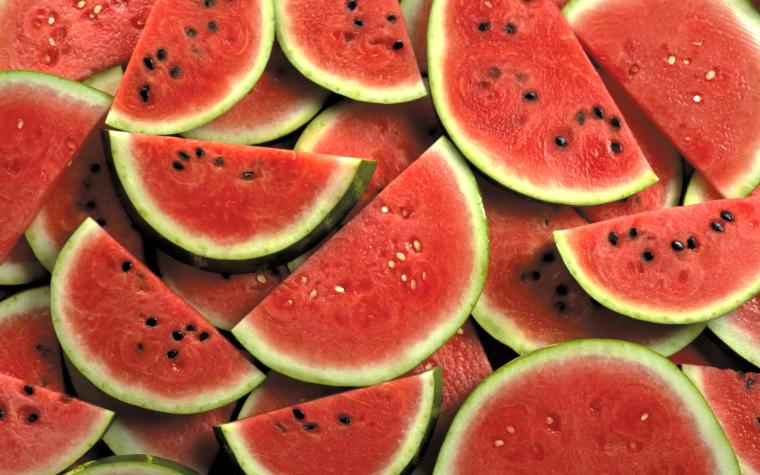Horticulture specialist has tips for choosing the best.
CARTHAGE, Mo. – Nothing says Fourth of July like a juicy, red slice of watermelon. July is observed as National Watermelon Month.
University of Missouri Extension horticulture specialist Matthew Huchteman says there are a few simple steps to check watermelons for ripeness and flavor. Ripe watermelons have a certain look, weight and sound. Watermelons come in a variety of sizes, colors and shapes, so find your personal favorite, says Huchteman.
• Weight. First, watermelons are about 92% water. To find the juiciest melon, choose one that is heavy for its size compared to others.
• Field spot. Look for a large yellow or cream-colored spot on the bottom of the melon where it would have touched the ground as it grew. This indicates that the melon was ripe when harvested. “The bigger the spot, the better,” says Huchteman. “A white or pale green field spot is a sign the watermelon was harvested too early.”
• Color. The melon’s exterior rind should be dull green, and it should be firm. Avoid melons with a shine.
• Stem. The stem is also a good indicator of ripeness. If harvesting from the vine, look for the curly tendril on the stem closest to where it meets the fruit. When this tendril has dried and turned brown, the watermelon is ready to pick.
• Sound. Although this is the least trustworthy indicator, try thumping it, says Huchteman. “Try gently knocking on the underbelly or field spot. A deep, thumping sound indicates ripeness. A hallow sound may mean that it is not fully ripe.”
• Smell. A sweet smell generally indicates ripeness. Stay away from watermelons with an unpleasant smell, which could mean the melon is overripe.
Missouri ranks 7th in U.S. watermelon production
According to MU Extension state horticulturist David Trinklein, Missouri ranks seventh in the United States in watermelon production. Most of Missouri’s watermelons are grown in in Pemiscot and Dunklin counties in southeastern Missouri, where more than 95% of the state’s watermelons are grown.
Missouri production has declined from over 5,000 acres in the mid-1990s and early 2000s to around 3,000 acres in 2017, according to the American Society for Horticultural Science. Despite this, watermelon remains an important specialty crop for Missouri, with a value of $8.445 million in 2017, according to MU Extension horticulturist Ramon Aranchibia.
Blodgett, Missouri, was once known as the Watermelon Capital of the World and even received an award at the 1904 World’s Fair.
